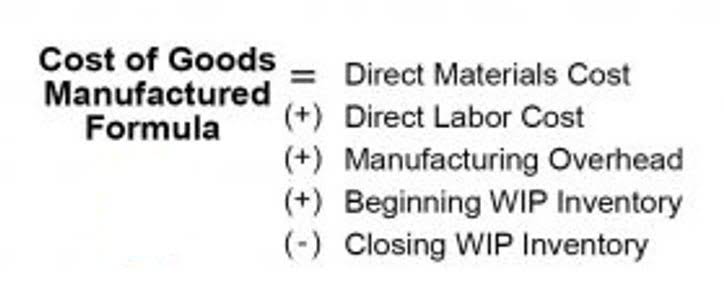
Bookkeeping
5 2 Introduction to hedge accounting

Hedge ineffectiveness is the extent to which the changes in the fair value or the cash flows of the hedging instrument are greater or less than those on the hedged item. The main principle of hedge accounting is to reduce this volatility by matching the timing of these gains and losses so that financial statements more accurately reflect economic realities. IFRS 9 requires only prospective assessment of hedge effectiveness on an ongoing basis, at inception of the hedging relationship and at a minimum when a company prepares annual or interim financial statements. Unlike IFRS 9, US GAAP requires a prospective and a retrospective assessment whenever financial statements are issued or earnings are reported, and at least every three months. Under US GAAP, a company is not required to separately measure hedge ineffectiveness. For hedge accounting, businesses need to ensure that the hedging instrument and hedged item qualify the IFRS 9 criteria.
United Kingdom content and pricing list
Hedge effectiveness is the extent to which changes in the fair value or the cash flows of the hedging instrument offset changes in the fair value or the cash flows of the hedged item. When translating the results and financial position of a foreign operation into a presentation currency, the entity is required to recognise foreign exchange differences in other comprehensive income. A fair value hedge addresses changes in the value of an asset or liability, while a cash flow hedge manages variability in future cash flows. The hedged item is an item (in its entirety or a component of an item) that is exposed to the specific risk(s) that a company has chosen to hedge based on its risk management activities. To qualify for hedge accounting, the hedged item needs to be reliably measurable.
Measurement and Recognition of Effectiveness
IFRS 9 allows an aggregate exposure comprising a nonderivative and a derivative instrument to be designated as the hedged item; therefore, hedge accounting need not be applied to each instrument separately. In the provided example, the aggregate exposure comprising the combination of the debt instrument plus the interest rate swap would be eligible to be designated as the hedged item. Apart from this, IFRS 9 introduced a more flexible and broader range of eligible hedging instruments and hedged items. Since these changes aligned hedge accounting more closely with businesses actual risk management policies, the financial statements are more transparent and informative. Under hedge accounting rules, companies must provide detailed disclosures on their hedging objectives, risk management strategies, hedging relationships, and hedge effectiveness. These disclosures help stakeholders interpret the impact of hedge accounting on the financial statements.
What is Hedge Accounting?
Additionally, no quantitative hedge effectiveness assessment is required if this method is applied. Companies https://www.bookstime.com/articles/bookkeeping-express that are exposed to market risks say foreign currency volatility, are more prone to incurring losses due to abrupt change in the value of the currency they are dealing with. To hedge themselves, they use financial instruments, such as forward contracts, options, or futures. Hedge accounting plays a role in financial management by aligning the timing of gains and losses on hedging instruments with those of the underlying exposures they are intended to offset. This approach helps companies manage risk more effectively, offering a clearer picture of their financial health.

Biodiversity Footprinting: How Financial Institutions Can Measure Their Impact

Thus, a hedging relationship is designated by an entity for a hedging instrument in its entirety that is to say splitting of instrument to designate as hedging instrument is not permitted (except in cases specified1). Businesses must meet strict documentation and effectiveness criteria to qualify for hedge accounting under US GAAP or IFRS. Hedge accounting provides a more accurate reflection of a company’s financial performance, reducing the impact of market volatility.

- An effective method to determine hedge effectiveness would be the one having a blend of quantitative analysis and qualitative criteria.
- It is optional, so you can select not to follow it and recognize all gains or losses from your hedging instruments to profit or loss.
- The hedged item is an item (in its entirety or a component of an item) that is exposed to the specific risk(s) that a company has chosen to hedge based on its risk management activities.
- In summary, hedge accounting is an important tool for managing risk while improving transparency in financial reporting.
- The methods for testing effectiveness can vary, but they generally involve statistical analysis or other quantitative measures to ensure that the hedge is performing as intended.
- A cash flow hedge is utilized to minimize the risk of future cash flow fluctuations arising from an already-held asset or liability or a planned transaction.
There are some important documentation requirements you’ll need to meet in order to use hedge accounting principles. All three categories of hedge accounting are distinguished by their accounting and reporting requirements. HighRadius Cash Forecasting hedge accounting Software helps businesses make data-driven decisions based on accurate future cash predictions. Normal accounting reflects the financial position and performance of the company based on its business transactions.
- By calculating the ratio of these changes, organizations can assess how well the hedge offsets risk over a specific period, such as monthly or quarterly.
- RSM US LLP is a limited liability partnership and the U.S. member firm of RSM International, a global network of independent assurance, tax and consulting firms.
- Banks also actively participate by structuring tailored derivatives for clients looking to hedge risks specific to their businesses.
- Positive fair value changes on the derivative can be offset by negative impacts of price changes on the forecasted purchase, and vice versa.
- There are specific rules around effectiveness testing and documentation requirements to qualify for hedge accounting.
- The changes in the fair value of both the hedging instrument and the hedged item are recognized in earnings, ensuring that the impact on the financial statements is neutralized.
- By doing that, it offers a clearer view of the company’s financial performance, aligning the accounting treatment with its risk management strategy.
- Yet, hedge accounting treatment will mitigate the impact and more accurately portray the earnings and the performance of the hedging instruments and activities in the company in question.
- Each member firm is responsible only for its own acts and omissions, and not those of any other party.
- The proposed ASU is intended to improve alignment of hedge accounting guidance with risk management activities.
- This means that the item being hedged against is not the asset or liability itself.
This is a scenario in which your business may make a gain (if interest rates on the variable payments increase beyond the established fixed rate) or a loss (if the inverse occurs). In traditional accounting, derivatives are recorded at fair value with changes in this value impacting profit and loss. IAS39 requires that all derivatives are marked-to-market with changes in the mark-to-market being taken to cash flow the profit and loss account. For many entities this would result in a significant amount of profit and loss volatility arising from the use of derivatives. For example, gold mines are exposed to the price of gold, airlines to the price of jet fuel, borrowers to interest rates, and importers and exporters to exchangerate risks.


